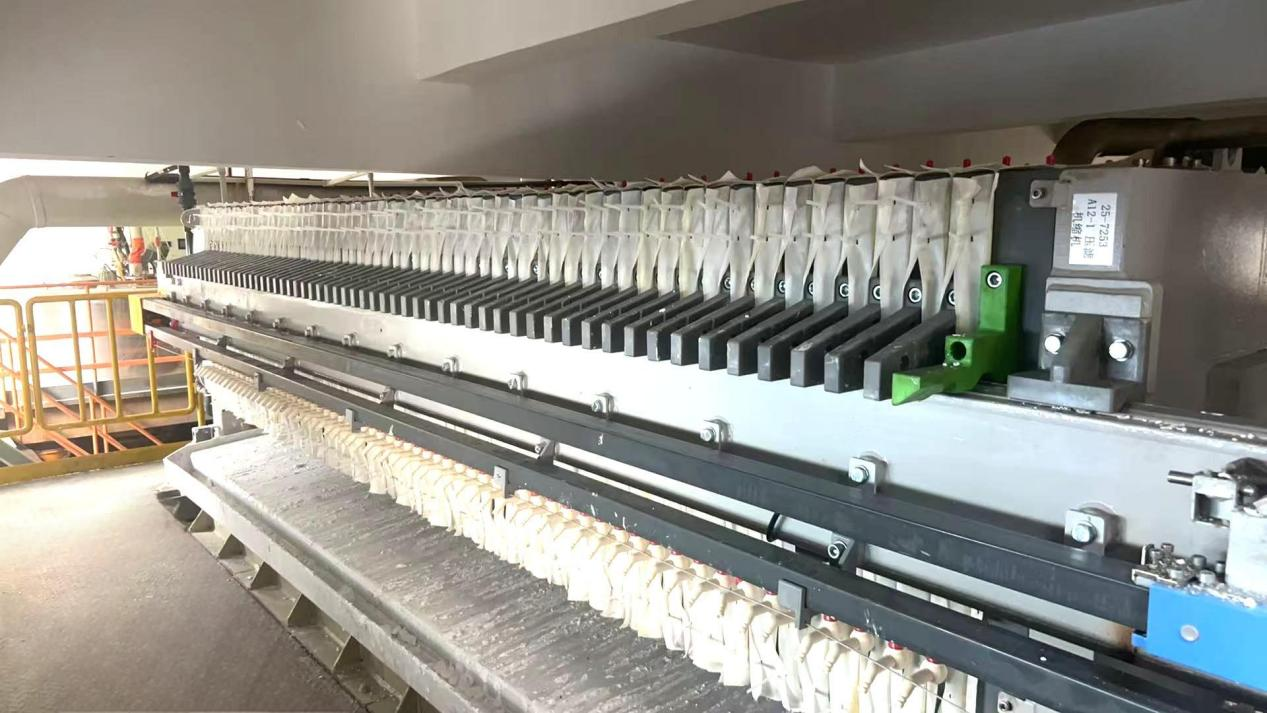稀土元素(lanthanides, Lns)包含镧系元素(La-Lu)及钪(Sc)、钇(Y)共17种元素,其独特的4f电子结构赋予其优异的光电磁特性[1]。近二十年来,稀土化合物在磁共振成像(MRI)造影剂、放射性核素治疗及生物标记技术等领域取得突破性进展[2],特别是钆(Gadolinium, Gd)和镥(Lutetium, Lu)广泛应用于医院的影像科和核医学科。然而,其在体内蓄积导致的肝、肾和神经毒性风险不容忽视[3]。因此,需通过多学科协作构建涵盖用药评估、剂量优化、毒性监测及个体化干预的全流程风险管理体系,在充分发挥稀土元素诊疗价值的同时,最大限度降低潜在风险,确保临床应用的安全性与有效性。
医学影像与诊断
在现代医学影像学中,拥有一双能看穿组织、洞悉病灶的“火眼金睛”是所有医生的梦想。而稀土元素,特别是钆(Gd),正是帮助MRI实现这一梦想的关键。
钆基化合物(gadolinium-based contrast agents, GBCAs)是目前临床最常用的MRI 造影剂,其核心机制正是通过顺磁性钆离子(Gd3+)显著增强周围水质子的纵向弛豫效率(r1),从而缩短T1时间,在图像上形成高信号对比,显著提升病灶与正常组织的对比度,提高诊断准确性[4]。
大量临床研究表明,钆喷酸葡胺(Gd-DTPA)及其衍生物增强MRI在脑转移瘤、肝癌和乳腺癌的诊断中具有显著优势。对于肝癌,Gd-DTPA及其衍生物(如Gd-EOB-DTPA)增强MRI的敏感性和整体诊断准确率均高于增强CT,尤其在检测直径小于2厘米的肝细胞癌时表现更为突出,能更早发现小病灶[5]。对于脑转移瘤,Gd-DTPA增强MRI在病灶对比度、边界清晰度和病变范围显示上均优于CT,在小于10毫米的微小病灶上能更准确地指导手术和后续治疗[6]。此外,MRI对软组织分辨率更高,能更好地显示肿瘤与周围组织的关系,这对于乳腺癌等软组织肿瘤的早期发现、准确分型和治疗方案制定也具有重要价值[7]。近年来,铕(Eu)和铽(Tb)配合物及其纳米探针在肿瘤靶向、病理可视化和术中引导方面取得了显著进展。新一代铕配合物通过与肿瘤特异性分子(如前列腺特异性膜抗原PSMA)结合,实现了对肿瘤细胞的高亲和力靶向,并能在小动物模型中通过光学成像有效指导肿瘤切除[8]。将铕/铽(Eu/Tb)配合物与转铁蛋白等靶向分子结合,可实现肿瘤细胞的双模态成像(时门荧光与磁共振),提升了诊断的准确性和空间分辨率[9]。
肿瘤靶向治疗
如果说稀土在诊断领域扮演的是“侦察兵”的角色,那么在治疗领域,它则化身为冲锋陷阵的“特种兵”。稀土放射性同位素(如镥-177、钇-90)在放射性核素治疗中展现精准杀伤能力。尤其是以镥-177(Lu-177)为代表的肽受体放射性核素治疗(PRRT),成为前列腺癌治疗的“新贵”。
Lu-177是一种能释放β射线的放射性同位素,其射程很短(约2毫米),这意味着它可以对肿瘤细胞进行“贴身”的、高剂量的放射打击,而对周围正常组织的损伤较小。通过将Lu-177与能够特异性靶向癌细胞表面受体(如前列腺特异性膜抗原PSMA)的分子连接起来,我们就得到了一种“生物导弹”。这种药物注入体内后,会自动寻找并结合到癌细胞上,然后“引爆”其携带的放射性核素,实现精准杀伤[10]。2022年,Pluvicto(177Lu-PSMA-617)获美国 FDA 批准用于治疗前列腺特异性膜抗原(PSMA)阳性的转移性去势抵抗性前列腺癌[11]。除此之外,钇-90(Y-90)微球疗法是一种选择性肝内放射治疗,主要用于不可切除的肝细胞癌(HCC)和结直肠癌肝转移瘤(mCRC),如TheraSphere®和SIR-Sphere®产品,通过精准定位实现局部肿瘤控制。未来,纳米材料作为药物载体,可协助稀土元素实现更智能的肿瘤靶向治疗。这些纳米颗粒可以被设计成在肿瘤特有的微环境(如酸性、乏氧)中才释放药物[12-13],或者通过外部刺激(如光、磁场)来激活[14-15],从而进一步提升治疗的精准度,降低全身性毒副作用。
稀土元素在医学应用的安全保障
临床研究和病例报告表明,反复使用钆基造影剂(GBCAs),尤其是在肾功能不全患者中,可能导致肾纤维化(如肾源性系统性纤维化,NSF)和神经毒性症状[16-17]。钆对比剂的分子稳定性是影响NSF发生风险的关键因素,低稳定性的线性钆剂(如Gd-DTPA)更易释放游离钆离子,增加毒性风险[17]。在保障用药安全上,估算肾小球滤过率(eGFR)筛查高风险人群,优先使用高稳定性的大环类 GBCAs(如 Gd-DOTA),并根据体重精确计算最低有效剂量(通常 0.1 mmol/kg),可大幅降低NSF发生率[18]。对需多次增强 MRI 检查的肿瘤患者,可随访患者每 3 个月复查血肌酐与尿微量白蛋白,及时发现早期肾损伤信号。
在放射性核素治疗领域,用药安全需聚焦剂量个体化与毒性预警。针对177Lu-PSMA-617治疗的 mCRPC 患者,药师可结合患者体重、肿瘤负荷及 PSMA PET/CT 的摄取程度,协助核医学医师计算个性化辐射剂量(通常 7.4 GBq / 周期) [19],此外,轻度血液毒性很常见,弥漫性骨髓受累是更严重骨髓抑制的危险因素 [20],监测治疗前血小板计数(<100×10⁹/L 时需减量)可降低骨髓抑制风险。对于接受 Y-90 微球治疗的肝癌患者,药师可推荐个体化剂量调整,结合肿瘤体积与肝功能参数,采用蒙特卡罗模拟优化给药方案 [21]。同时规避与奥沙利铂等肝毒性化疗药物的联用,减少肝功能衰竭风险。
稀土元素从“工业味精”跃升为“诊疗尖兵”,既拓宽了临床视野,也放大了用药风险。唯有让影像科、核医学科、药学与检验科持续“同屏共振”,把每一次eGFR筛查、剂量精算、AI预警、多学科会诊都转化为循证决策,方能在“看得更清”与“做得更准”之间找到安全支点。让稀土医疗在精准、可控、可追溯的轨道上,为患者点亮更安全、更长久的生命之光。
文献列表
[1] Wells, W.H., & Wells, V.L. (2012). The Lanthanides, Rare Earth Elements. Patty's Toxicology, 817-840.
[2] Lei, P., Feng, J., & Zhang, H. (2020). Emerging biomaterials: Taking full advantage of the intrinsic properties of rare earth elements. Nano Today, 35, 100952.
[3] Shin, S., Kim, H., & Rim, K. (2019). Worker Safety in the Rare Earth Elements Recycling Process From the Review of Toxicity and Issues. Safety and Health at Work, 10, 409 - 419.
[4] Blomqvist, L., Nordberg, G. F., Nurchi, V. M., & Aaseth, J. O. (2022). Gadolinium in Medical Imaging-Usefulness, Toxic Reactions and Possible Countermeasures-A Review. Biomolecules, 12(6), 742. https://doi.org/10.3390/biom12060742
[5] Li, J., Wang, J., Lei, L., Yuan, G., & He, S. (2019). The diagnostic performance of gadoxetic acid disodium-enhanced magnetic resonance imaging and contrast-enhanced multi-detector computed tomography in detecting hepatocellular carcinoma: a meta-analysis of eight prospective studies. European radiology, 29(12), 6519–6528. https://doi.org/10.1007/s00330-019-06294-6
[6] Xie, T., Liu, W., Chen, L., Zhang, Z., Chen, Y., Wang, Y., Deng, W., Tang, W., & Zhou, Z. (2024). Head-to-head comparison of contrast-enhanced CT, dual-layer spectral-detector CT, and Gd-EOB-DTPA-enhanced MR in detecting neuroendocrine tumor liver metastases. European journal of radiology, 181, 111710. https://doi.org/10.1016/j.ejrad.2024.111710
[7] Wekking, D., Porcu, M., De Silva, P., Saba, L., Scartozzi, M., & Solinas, C. (2023). Breast MRI: Clinical Indications, Recommendations, and Future Applications in Breast Cancer Diagnosis. Current Oncology Reports, 1-11. https://doi.org/10.1007/s11912-023-01372-x.
[8] Lengacher, R., Martin, K. E., Śmiłowicz, D., Esseln, H., Lotlikar, P., Grichine, A., Maury, O., & Boros, E. (2023). Targeted, Molecular Europium(III) Probes Enable Luminescence-Guided Surgery and 1 Photon Post-Surgical Luminescence Microscopy of Solid Tumors. Journal of the American Chemical Society, 145(44), 24358–24366. https://doi.org/10.1021/jacs.3c09444
[9] Song, B., Jiang, J., Yan, H., Huang, S., & Yuan, J. (2023). A tumor-targetable probe based on europium(III)/gadolinium(III) complex-conjugated transferrin for dual-modal time-gated luminescence and magnetic resonance imaging of cancerous cells in vitro and in vivo. Journal of materials chemistry. B, 11(19), 4346–4353. https://doi.org/10.1039/d3tb00387f
[10] Ferdinandus, J., Violet, J., Sandhu, S., & Hofman, M. S. (2018). Prostate-specific membrane antigen theranostics: therapy with lutetium-177. Current opinion in urology, 28(2), 197–204. https://doi.org/10.1097/MOU.0000000000000486
[11] Novartis PluvictoTM approved by FDA as first targeted radioligand therapy for treatment of progressive, PSMA positive metastatic castration-resistant prostate cancer. Retrieved March 23, 2022, from https://www.globenewswire.com/news-release/2022/03/23/2408996/0/en/Novartis-PluvictoTM-approved-by-FDA-as-first-targeted-radioligand-therapy-for-treatment-of-progressive-PSMA-positive-metastatic-castration-resistant-prostate-cancer.html
[12] Gong, F., Yang, N., Wang, X., Zhao, Q., Chen, Q., Liu, Z., & Cheng, L. (2020). Tumor microenvironment-responsive intelligent nanoplatforms for cancer theranostics. Nano Today. https://doi.org/10.1016/j.nantod.2020.100851.
[13] Wang, Y., Deng, T., Liu, X., Fang, X., Mo, Y., Xie, N., Nie, G., Zhang, B., & Fan, X. (2024). Smart Nanoplatforms Responding to the Tumor Microenvironment for Precise Drug Delivery in Cancer Therapy. International Journal of Nanomedicine, 19, 6253 - 6277. https://doi.org/10.2147/IJN.S459710.
[14] Pham, S., Choi, Y., & Choi, J. (2020). Stimuli-Responsive Nanomaterials for Application in Antitumor Therapy and Drug Delivery. Pharmaceutics, 12. https://doi.org/10.3390/pharmaceutics12070630.
[15] Zhou, Z., Vázquez‐González, M., & Willner, I. (2021). Stimuli-responsive metal-organic framework nanoparticles for controlled drug delivery and medical applications.Chemical Society reviews. https://doi.org/10.1039/d0cs01030h
[16] Morcos, S. (2007). Nephrogenic systemic fibrosis following the administration of extracellular gadolinium based contrast agents: is the stability of the contrast agent molecule an important factor in the pathogenesis of this condition? The British journal of radiology, 80 950, 73-6 . https://doi.org/10.1259/BJR/17111243.
[17] Broome, D. (2008). Nephrogenic systemic fibrosis associated with gadolinium based contrast agents: a summary of the medical literature reporting. European journal of radiology, 66 2, 230-4 . https://doi.org/10.1016/j.ejrad.2008.02.011.
[18] Ramalho, J., Semelka, R., Ramalho, M., Nunes, R., Alobaidy, M., & Castillo, M. (2016). Gadolinium-Based Contrast Agent Accumulation and Toxicity: An Update. American Journal of Neuroradiology, 37, 1192 - 1198. https://doi.org/10.3174/ajnr.A4615.
[19] Sartor, A., Morris, M., Chi, K., De Bono, J., Shore, N., Crosby, M., Kreisl, T., & Fizazi, K. (2022). PSMAfore: A phase 3 study to compare 177Lu-PSMA-617 treatment with a change in androgen receptor pathway inhibitor in taxane-naïve patients with metastatic castration-resistant prostate cancer.. Journal of Clinical Oncology. https://doi.org/10.1200/jco.2022.40.6_suppl.tps211.
[20] Kratochwil, C., Giesel, F., Stefanova, M., Benešová, M., Bronzel, M., Afshar-Oromieh, A., Mier, W., Eder, M., Kopka, K., & Haberkorn, U. (2016). PSMA-Targeted Radionuclide Therapy of Metastatic Castration-Resistant Prostate Cancer with 177Lu-Labeled PSMA-617. The Journal of Nuclear Medicine, 57, 1170 - 1176. https://doi.org/10.2967/jnumed.115.171397.
[21] Roncali, E., Taebi, A., Foster, C., & Vu, C. (2020). Personalized Dosimetry for Liver Cancer Y-90 Radioembolization Using Computational Fluid Dynamics and Monte Carlo Simulation. Annals of Biomedical Engineering, 48, 1499 - 1510. https://doi.org/10.1007/s10439-020-02469-1.


 兰石中科与虔东稀土集团股份有限公司深化纳米材料领域合作 1000吨/年纳米碳酸镧生产线成功运行
兰石中科与虔东稀土集团股份有限公司深化纳米材料领域合作 1000吨/年纳米碳酸镧生产线成功运行 稀土金属在工业领域有何重要性?稀土金属的市场需求和供应情况如何?
稀土金属在工业领域有何重要性?稀土金属的市场需求和供应情况如何? 中国稀土出口管制重击美国战略软肋 美防务供应链陷五年空窗期
中国稀土出口管制重击美国战略软肋 美防务供应链陷五年空窗期 中国出手,精准反击!美国六代战机,突传变数!“工业味精”稀土正在成为美国军工复合体最痛的软肋
中国出手,精准反击!美国六代战机,突传变数!“工业味精”稀土正在成为美国军工复合体最痛的软肋